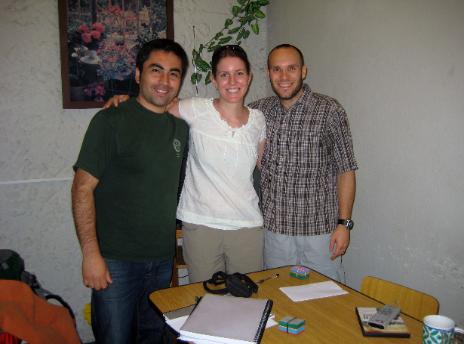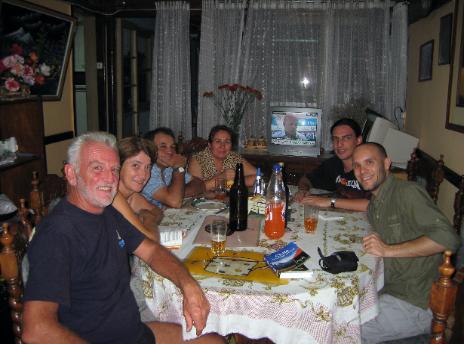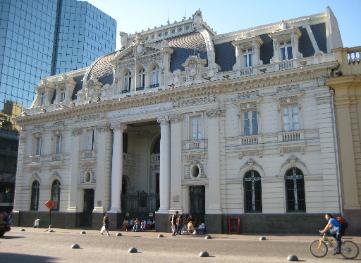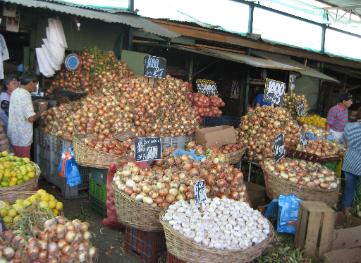|
|
“Hola! Una cerveza, por favor.”
That was about the extent of our Spanish skills as we embarked on the three-and-a-half month South America
leg of our trip. Therefore, upon landing in Santiago, Chile we promptly enrolled in a two week Spanish language
immersion course with the Natalis Language Center. Each weekday we spent 5 hours learning basic communication
skills. It was just Jarrod and I and our teacher, Carlos. Carlos was great—he took his job of teaching us seriously,
as he never let us slide by with incorrect pronunciation or conjugations. But he was also fun, and made sure that as
he taught us the language he also brought Chile’s history and culture to life. He incorporated a few famous Chilean
movies into our curriculum. We watched “Machuca” and “Sub Terra”. (Both gave us a glimpse into Chile’s past, the
first portraying the political differences and struggle between different economic classes during the 1973 Pinochet
|
|
|
|
coup and the second telling the story of
the exploitation of miners.) We also
watched a hilarious movie that is
popular in Chile today. It is called “El
Chacotero Sentimental” and it is based
on a real DJ that takes calls from the
public regarding outrageous situations
they find themselves in. This show
gave us a first hand glimpse of how
much more casual South Americans are
about sex and nudity. Let’s just say
you would never see this movie inside
a classroom in the States!
In an effort to maximize our learning
we opted to stay with a local family
rather than in a hostel or hotel. The
school hooked us up with Miriam and
her family who lived in the Santa Isabel
area of Santiago. Her house had a
convenience store at the front, which
her mother ran. The house was narrow
and deep, and the only common area
was the dinner table. This was the
place where we gathered for dinner
and studying with other students also
staying there, and where we heard
Miriam’s family eating dinner until the
wee hours of the night (or morning).
Miriam typically served our dinner
around 9pm, and then her family ate
around 11pm or sometimes midnight.
We had our own small bedroom and
shared the bathroom with the other
students and Miriam’s sons. For the
first week we were joined by a retired
couple from France who were also
taking Spanish lessons at the Natalis
Language Center. As we speak no
French and they speak no English our
dinner conversations were quite
entertaining! While it took about two
hours to communicate the simplest of
plans it was great practice for our
Spanish.
|
|
|
|
Nuestro profesora, Carlos.
|
|
|
|
|
|
Santiago has relatively few “must see” sights, which made it a good city in which to spend the majority of our
time in a classroom. We had class from 10am to 1pm and then again from 2pm to 4pm. Our classes were located in
the heart of Santiago so we were able to check out the city during our lunch break and after class. We visited the
local deli for lunch where we bought “pan con jamon y queso” and headed to one of the many parks scattered
throughout Santiago for a picnic lunch. After class we would wander through different neighborhoods, such as Bella
Vista, Providencia or Lastarria. After two weeks I would describe Santiago as a good place to live, but not a very
exciting vacation destination.
|
|
|
|
Correo Central en Plaza de Armas.
|
|
La Vega Central Mercado in Santiago.
|
|
|
|
So, after two weeks, how much Spanish did we actually learn? To our surprise, more than we thought. The class
covered four different tenses, sentence structure, verb conjugations and tons of vocabulary. We headed out of
Santiago with a good foundation of the Spanish language and a stack of flashcards three inches thick to keep us
busy on long bus rides. So now, although we can say “Vamos a viajar en Sud America para tres y media meses”
(we are going to travel in South America for three and a half months) we still find that “Una cerveza, por favor”
wins us more friends.
|
|
|
|
return to chile overview next chile journal>
|
|
|
|
|
|
|
|









